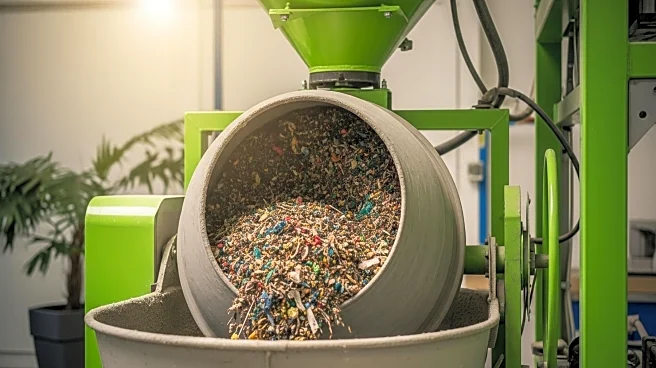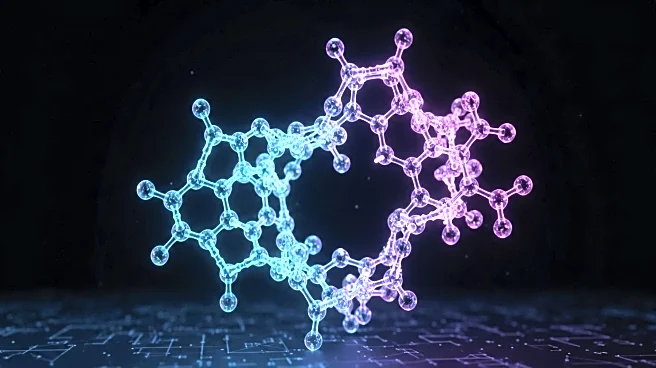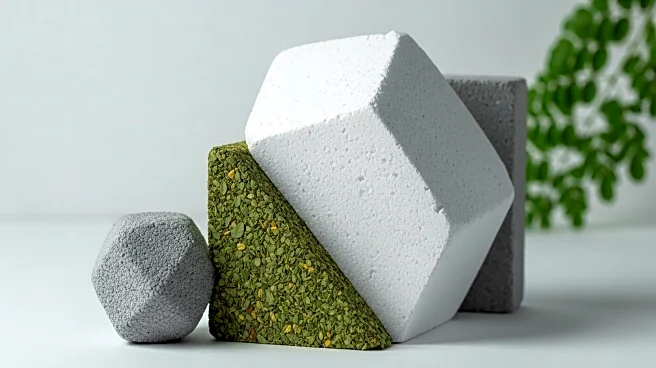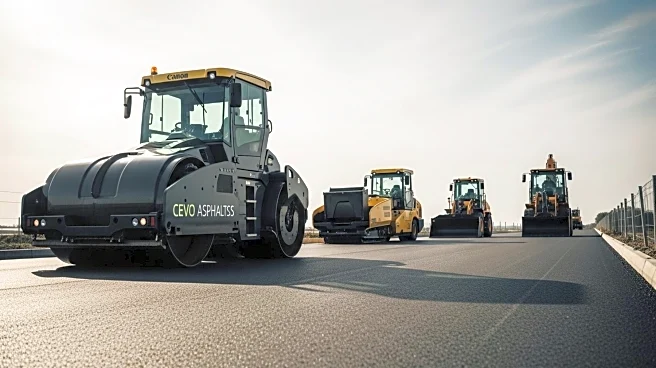What is the story about?
What's Happening?
Researchers have created a sustainable concrete blend that incorporates agro-industrial waste materials, significantly reducing carbon emissions without compromising strength. Cement production is a major contributor to global CO2 emissions, accounting for approximately 8% due to the energy-intensive calcination of limestone. The new concrete mix uses fly ash, rice husk ash, and pumice as partial replacements for cement, aligning with circular economy principles by transforming industrial by-products into valuable construction resources. The study involved developing quaternary concrete blends and testing their strength and durability using ASTM standards. Machine learning models were employed to predict compressive strength and optimize mix design, achieving a compressive strength of over 38 MPa after 120 days of curing.
Why It's Important?
The development of this low-carbon concrete mix is significant for the construction industry, which is under pressure to reduce emissions. By utilizing agro-industrial waste, the blend not only lowers CO2 emissions by approximately 38.8% compared to conventional concrete but also enhances mechanical properties such as compressive strength and elasticity. This innovation offers potential cost savings and supports waste reduction efforts, making it a practical solution for regions with access to these by-products. The use of machine learning models to optimize mix design further enhances the potential for tailored solutions that balance environmental goals with mechanical performance.
What's Next?
The construction industry faces challenges in scaling the use of agro-industrial waste in concrete mixes, including ensuring consistent quality of waste materials and adapting mix designs to different climates and structural requirements. Collaboration among material scientists, engineers, policymakers, and industry stakeholders will be crucial to bridge the gap between research and implementation. There is potential to explore other underutilized by-products and develop region-specific guidelines, integrating these innovations into green building standards. The next step involves turning research insights into widely adopted practices to achieve lower carbon impact in construction.
Beyond the Headlines
This research not only contributes to the knowledge base but also provides practical tools for sustainable construction. The combination of material innovation and predictive modeling offers valuable insights for engineers looking to build with lower carbon impact. The study highlights the importance of integrating these innovations into design workflows and green building standards, paving the way for more sustainable construction practices.
AI Generated Content
Do you find this article useful?













